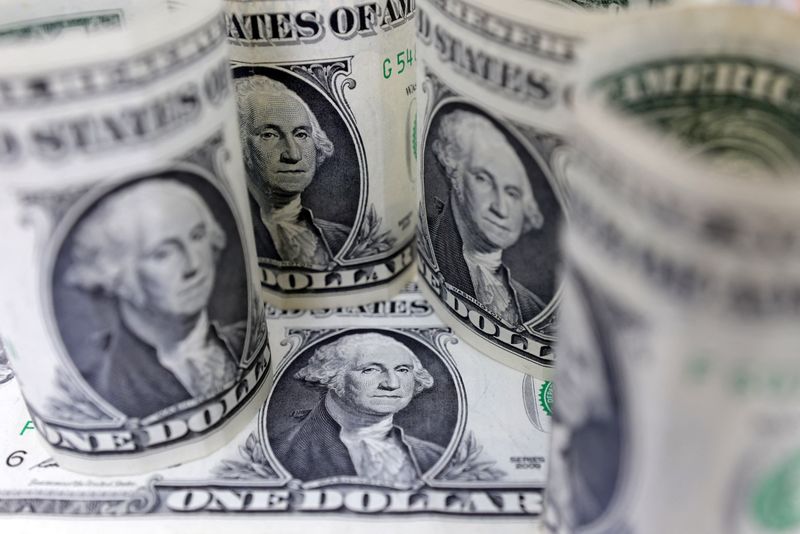By Kevin Buckland
TOKYO (Reuters) -The U.S. dollar rose toward a four-month peak versus major peers on Tuesday, while bitcoin extended its record rally as investors continued to pile into trades seen as benefiting from the incoming Donald Trump administration.
The euro languished near an almost seven-month trough reached overnight, and the yuan slumped to a more than three-month low with Europe and China both major targets of potential Trump tariffs.
The U.S. dollar index, which measures the currency against six peers including the euro, rose 0.16% to 105.59 as of 0507 GMT, edging back towards Monday’s high of 105.70, its strongest since July 3.
Leading cryptocurrency bitcoin pushed to a new all-time peak of $89,637 earlier in the day. Trump has vowed to make the United States “the crypto capital of the planet”.
“If history is any guide, Bitcoin could easily finish the year around $100,000,” said Kyle Rodda, a senior financial markets analyst at Capital.com.
Meanwhile, “the expectation of U.S. economic outperformance and aggressive trade practices from the Trump administration continues to push the U.S. dollar higher,” Rodda said.
“Markets are dialling back expectations of Fed cuts going forward, with a cut at the December meeting being thrown into question.”
Trump’s Republican Party will control both houses of Congress when he takes office in January, Decision Desk HQ projected on Monday. That would enable him to push an agenda of slashing taxes and shrinking the federal government.
Potentially inflationary tariffs and immigration policies have seen market odds of a quarter point Federal Reserve interest rate cut on Dec. 18 pared to about 69% from nearly 80% a week ago, according to CME Group’s (NASDAQ:CME) FedWatch Tool.
Trump has warned that the euro bloc will “pay a big price” for not buying enough American exports, with cars a particular target of the incoming U.S. President. He has threatened China with blanket 60% tariffs.
The offshore yuan dipped as low as 7.2505 per dollar, the weakest since Aug. 1, before last trading at 7.2469.
The Aussie – which tends to be swayed by the economic outlook for China, Australia’s top trading partner – sagged 0.33% to $0.65525.
The euro sank to $1.0629 overnight for the first time since April 22, and last changed hands at $1.0642.
The shared currency is feeling additional pressure from political uncertainty in the bloc’s biggest economy, Germany. Chancellor Olaf Sholz’s remaining coalition partner, the Greens, on Monday joined opposition calls for an earlier parliamentary vote to open the way to a snap election.
Consumer inflation readings are due from around the region on Tuesday, including Germany.
Sterling weakened 0.23% to $1.2841 ahead of employment data that could provide clues on the pace of Bank of England rate cuts.
The yen edged up about 0.1% to 153.48 per dollar, making up a small part of its 0.7% slide overnight. The Japanese currency dropped to a three-month low of 154.715 per dollar last week.
“There is more upside to the USD in our view,” said Kristina Clifton, a senior currency strategist at Commonwealth Bank of Australia (OTC:CMWAY).
“The fast money has already shifted capital, but long-term investors will take time to reallocate their portfolio.”

